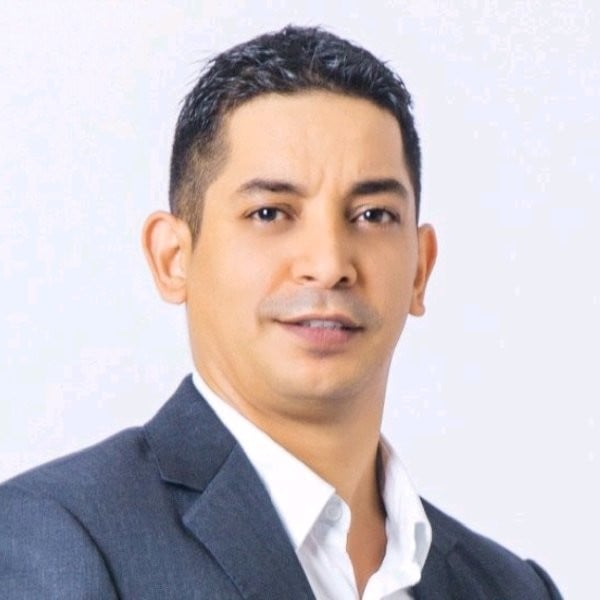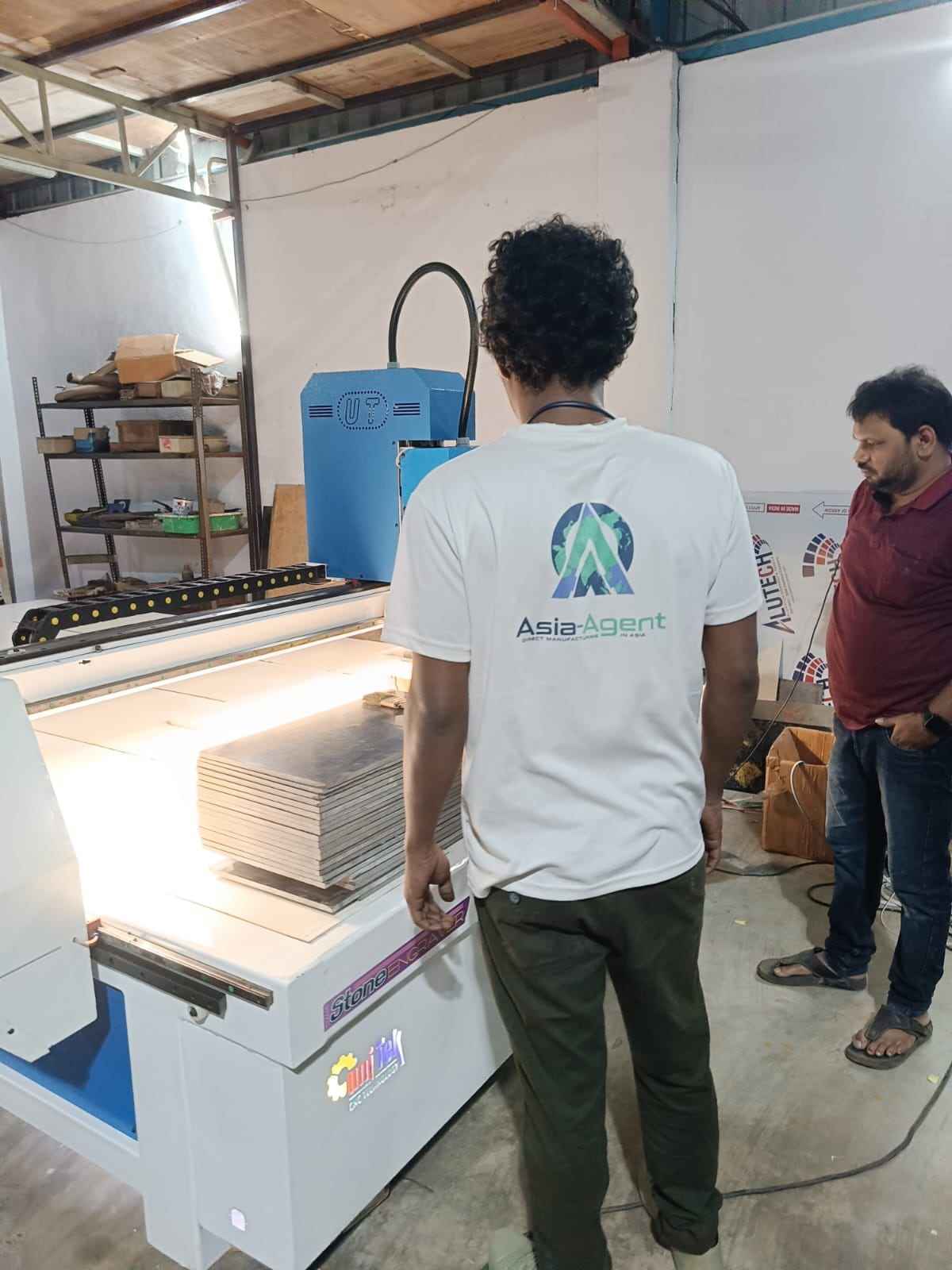Why Diversifying Your Supply Chain Across Asia is Crucial in 2024: Beyond China and Into New Manufacturing Hubs
As we move deeper into 2024, the global economic landscape is becoming increasingly complex, and one trend stands out as particularly crucial for businesses: the need to diversify supply chains beyond China. For decades, China has been the world's manufacturing hub, offering unparalleled advantages in cost, efficiency, and scale. However, as geopolitical tensions rise, labor costs increase, and stringent regulations like the Uyghur Forced Labor Prevention Act (UFLPA) come into play, companies are realizing that relying solely on China for manufacturing is no longer a sustainable strategy.
In this comprehensive article, we will explore why diversifying your supply chain across Asia is not just advisable but essential. We'll delve into the specific benefits this strategy offers, the challenges it presents, and how Asia Agent Pte Ltd can assist you in navigating these complexities to ensure your business remains competitive, resilient, and compliant in the face of a rapidly changing global market.
The Shifting Landscape: Why China is No Longer the Only Option
China’s dominance in the global manufacturing sector has been unrivaled for many years, but the landscape is shifting, prompting businesses to reconsider their strategies. Several factors are driving this change:
1. Geopolitical Tensions
The trade war between the U.S. and China, ongoing diplomatic frictions, and increasing scrutiny over human rights issues have made the business environment in China more volatile. The UFLPA, for instance, directly targets products linked to forced labor in Xinjiang, a major region for cotton production. Companies with supply chains connected to this region face the risk of their goods being detained, excluded, or seized by U.S. Customs. These geopolitical tensions create uncertainties that can disrupt supply chains, making diversification into other regions a prudent move.
2. Rising Labor Costs
China's economic development has led to significant increases in labor costs, particularly in coastal areas where most manufacturing is concentrated. What was once a cost advantage is now eroding, making China less competitive compared to other emerging markets. Countries like Vietnam, Bangladesh, and Indonesia offer much lower labor costs, making them attractive alternatives for businesses looking to maintain or improve their profit margins.
3. Regulatory Challenges
The regulatory environment in China has become increasingly complex, with new laws and policies impacting foreign businesses. The UFLPA is a prime example of external regulations that affect companies operating in China, particularly those involved in industries like textiles and electronics. Compliance with such regulations requires significant resources and constant vigilance. By diversifying supply chains to include other Asian countries, businesses can reduce their exposure to these regulatory risks and ensure smoother operations.
The Benefits of Diversifying Across Asia
Diversifying your supply chain across multiple Asian countries offers numerous strategic advantages that go beyond simple risk mitigation. Here are some of the key benefits:
1. Cost Savings
One of the most compelling reasons to diversify is the potential for cost savings. Countries like Vietnam, India, Bangladesh, and Indonesia offer significantly lower labor costs compared to China. For example, while the average manufacturing wage in China has risen to over $6 per hour, wages in Vietnam remain below $3 per hour, and in Bangladesh, they are even lower. By shifting some of your production to these countries, you can achieve substantial cost reductions without compromising on quality.
Moreover, some of these countries offer additional financial incentives, such as tax breaks or reduced tariffs, to attract foreign investment. These incentives can further enhance the cost-effectiveness of your supply chain.
2. Risk Mitigation
Relying on a single country for manufacturing exposes your business to various risks, including political instability, natural disasters, and supply chain disruptions. Diversifying across multiple countries spreads these risks and enhances the resilience of your supply chain. For instance, if a natural disaster or political event disrupts production in one country, you can shift production to another without significant delays or increased costs.
This approach also protects your business from the risks associated with regulatory changes, such as those imposed by the UFLPA. By avoiding regions with high-risk profiles, you can reduce the likelihood of encountering legal or ethical issues that could harm your brand and bottom line.
3. Access to New Markets
Expanding your supply chain into new countries also opens up opportunities to access new markets. For example, manufacturing in India not only provides cost advantages but also positions your business closer to the growing South Asian market. Similarly, Vietnam’s proximity to ASEAN markets can facilitate faster and more cost-effective distribution of your products within Southeast Asia.
These new markets are often less saturated than those in more developed regions, offering significant growth potential for businesses willing to invest in local production. By establishing a presence in these markets, you can gain a competitive edge and tap into new revenue streams.
4. Regulatory Compliance
The UFLPA and similar regulations require companies to ensure their supply chains are free from forced labor and other unethical practices. Diversifying away from regions like Xinjiang, where these issues are prevalent, helps ensure compliance with these regulations. This not only protects your business from legal penalties but also enhances your reputation as an ethical and socially responsible company.
Compliance with international labor standards is increasingly becoming a requirement for doing business with major global brands and retailers. By diversifying your supply chain to include countries with better labor practices and stronger regulatory environments, you can meet these standards more easily and avoid potential disruptions to your business relationships.
5. Enhanced Agility
A diversified supply chain is inherently more agile and responsive to changes in the global market. When your production is spread across multiple regions, you can quickly adjust to fluctuations in demand, changes in trade policies, or shifts in currency exchange rates. This flexibility allows you to respond to market opportunities or challenges more effectively, ensuring your business remains competitive in a fast-changing environment.
For instance, if demand for a particular product surges in one region, you can ramp up production in a nearby manufacturing hub to meet that demand quickly. Similarly, if tariffs or other trade barriers are introduced, you can shift production to a region with more favorable trade terms, minimizing the impact on your costs and pricing.
Challenges and Considerations When Expanding into New Regions
While the benefits of diversifying your supply chain are clear, the process is not without its challenges. Companies must navigate a range of factors when expanding into new manufacturing hubs:
1. Legal and Regulatory Frameworks
Each country has its own legal and regulatory requirements, from labor laws to import/export regulations. Navigating these frameworks can be complex, especially when dealing with multiple countries simultaneously. Compliance with local laws is essential to avoid legal issues, fines, and disruptions to your operations.
For example, India has strict labor laws that govern working conditions, wages, and employee benefits. Understanding and complying with these regulations is crucial to maintaining a stable and compliant workforce. Similarly, Vietnam’s regulations on foreign investment and business operations can be intricate, requiring careful planning and execution to ensure a smooth entry into the market.
At Asia Agent Pte Ltd, we provide expert guidance on navigating these legal and regulatory challenges. Our team of local experts understands the intricacies of each country’s legal environment and can help you develop a strategy that ensures compliance while maximizing operational efficiency.
2. Cultural Differences
Cultural understanding is key to building strong relationships with local suppliers and partners. Each country in Asia has its own unique business culture, communication styles, and negotiation tactics. Misunderstandings or cultural missteps can lead to strained relationships, delays, or even the failure of business ventures.
For instance, in countries like Japan and South Korea, business relationships are often built on long-term trust and mutual respect, requiring patience and a deep understanding of local customs. In contrast, business practices in India may involve more direct communication and rapid decision-making processes.
Asia Agent Pte Ltd offers cultural training and support to help you navigate these nuances effectively. We provide insights into the business practices and cultural expectations of each region, ensuring that you approach negotiations and partnerships with the right mindset and strategies.
3. Logistical Complexities
Expanding into new regions can complicate logistics, from transportation routes to supply chain coordination. Different countries may have varying levels of infrastructure development, which can affect the speed and reliability of shipping, warehousing, and distribution.
For example, while Vietnam has rapidly developed its transportation infrastructure, certain regions may still face challenges related to road quality, port capacity, or customs processing times. Similarly, Bangladesh’s growing garment industry may experience bottlenecks in logistics due to high demand and limited infrastructure.
To address these challenges, Asia Agent Pte Ltd provides comprehensive logistics support, including the coordination of transportation, warehousing, and distribution. We work with trusted local partners to ensure that your supply chain operates smoothly and efficiently, regardless of the region.
4. Supplier Vetting and Quality Control
Finding reliable suppliers in new regions can be challenging. It’s essential to invest in thorough vetting processes to ensure that your suppliers meet your quality standards, comply with local laws, and adhere to ethical labor practices.
Supplier reliability can vary significantly from one country to another, and even within the same country. For instance, while India and Vietnam have many established and reputable suppliers, smaller or newer suppliers may require additional scrutiny to ensure they can meet your expectations.
Asia Agent Pte Ltd conducts rigorous supplier audits and verifications to ensure that you partner with the best possible suppliers. Our on-the-ground teams visit potential suppliers, assess their facilities, and evaluate their capabilities to ensure they meet your requirements. We provide detailed reports and recommendations, allowing you to make informed decisions with confidence.
Real-Life Examples: Success Stories in Supply Chain Diversification
Several businesses have successfully diversified their supply chains across Asia, reaping the benefits of reduced costs and enhanced resilience. Let’s explore a couple of real-life examples that highlight the advantages of supply chain diversification:
Case Study 1: A Major Fashion Brand’s Shift to Vietnam
A well-known fashion brand, facing rising production costs in China and increasing scrutiny over labor practices, sought to diversify its supply chain. With the assistance of Asia Agent Pte Ltd, the company identified Vietnam as an ideal location for expanding its manufacturing operations.
After a thorough assessment and supplier vetting process, the company shifted a significant portion of its production from China to Vietnam. The move resulted in a substantial cost reduction, with the production cost per piece dropping from $4.20 in China to $2.40 in Vietnam. In addition to cost savings, the company benefited from Vietnam’s growing infrastructure, skilled labor force, and proximity to key Southeast Asian markets.
The successful transition not only improved the company’s profit margins but also enhanced its supply chain resilience. By diversifying into Vietnam, the brand reduced its exposure to geopolitical risks and regulatory challenges in China, positioning itself for long-term growth in the region.
Case Study 2: A Consumer Electronics Company Expands into India and Indonesia
A leading consumer electronics company recognized the need to diversify its supply chain beyond China to mitigate risks associated with trade tensions and rising costs. The company, with the support of Asia Agent Pte Ltd, explored new manufacturing opportunities in India and Indonesia.
India’s robust engineering talent and growing electronics manufacturing sector made it an attractive destination for the company’s production of high-tech components. Meanwhile, Indonesia’s favorable labor costs and strategic location for Southeast Asian distribution offered additional advantages.
By establishing production facilities in both countries, the company achieved significant cost savings and gained greater flexibility in responding to market changes. The diversified supply chain allowed the company to quickly adjust production levels based on demand fluctuations, ensuring timely delivery of products to global markets.
The company’s successful expansion into India and Indonesia not only reduced its reliance on China but also opened up new growth opportunities in rapidly developing markets. The enhanced supply chain agility enabled the company to maintain its competitive edge in the fast-paced electronics industry.
How Asia Agent Pte Ltd Can Help You Navigate Supply Chain Diversification
Diversifying your supply chain across Asia is a complex but necessary step in today’s global market. At Asia Agent Pte Ltd, we specialize in helping businesses successfully transition to multi-hub manufacturing, providing comprehensive support throughout the process. Here’s how we can assist you:
1. HUB & Supplier Research
We conduct thorough research to identify the best manufacturing hubs for your specific needs. Whether you’re looking for cost savings, proximity to markets, or specific industry expertise, we help you select the right countries and suppliers. Our team evaluates factors such as labor costs, infrastructure, regulatory environment, and supplier capabilities to ensure you make informed decisions.
2. Visit & Verify
Our team on the ground visits and verifies potential suppliers, ensuring they meet your standards for quality, compliance, and reliability. We provide detailed reports and recommendations, so you can make informed decisions with confidence. By conducting on-site inspections and engaging with suppliers directly, we ensure that your partners are trustworthy and capable of delivering consistent results.
3. Negotiation & Contract
We assist in negotiating favorable terms with new suppliers, including pricing, lead times, and quality standards. Our expertise in local business practices ensures you get the best deals while avoiding common pitfalls. We help you draft contracts that protect your interests and include provisions for regular audits, quality control, and compliance with ethical labor standards.
4. Monthly Support Packages
We offer ongoing support to help you manage your diversified supply chain. From quality control and logistics coordination to supplier relationship management, we provide the resources you need to keep your operations running smoothly. Our monthly support packages are tailored to your specific needs, ensuring that you have the right level of oversight and assistance at every stage of your supply chain.
5. Legal and Compliance Support
We guide you through the legal and regulatory requirements of each new region, helping you stay compliant and avoid costly mistakes. This includes ensuring adherence to international labor standards and navigating complex import/export regulations. Our legal experts provide advice on contract law, labor regulations, and intellectual property protection, ensuring that your business operates within the legal frameworks of each country.
6. Cultural Training and Support
Understanding the local culture is crucial to building successful supplier relationships. We provide cultural training and support to help you navigate the nuances of doing business in different Asian countries. Our cultural experts offer insights into local customs, communication styles, and business etiquette, helping you build strong, long-term partnerships with suppliers and other stakeholders.
Conclusion: Securing Your Supply Chain for the Future
In 2024, diversifying your supply chain across Asia is not just a strategic advantage—it’s a necessity. As geopolitical tensions, rising costs, and regulatory challenges make sole reliance on China increasingly risky, exploring new manufacturing hubs in countries like Vietnam, India, Bangladesh, and Indonesia is crucial for maintaining competitiveness and resilience.
Asia Agent Pte Ltd is here to help you make this transition smoothly and successfully. With our expertise, local presence, and comprehensive support services, we’ll guide you through the complexities of supply chain diversification, ensuring your business is well-positioned for the future.
Contact Asia Agent Pte Ltd today to learn how we can help you diversify your supply chain and secure your business’s success in the evolving global market.




